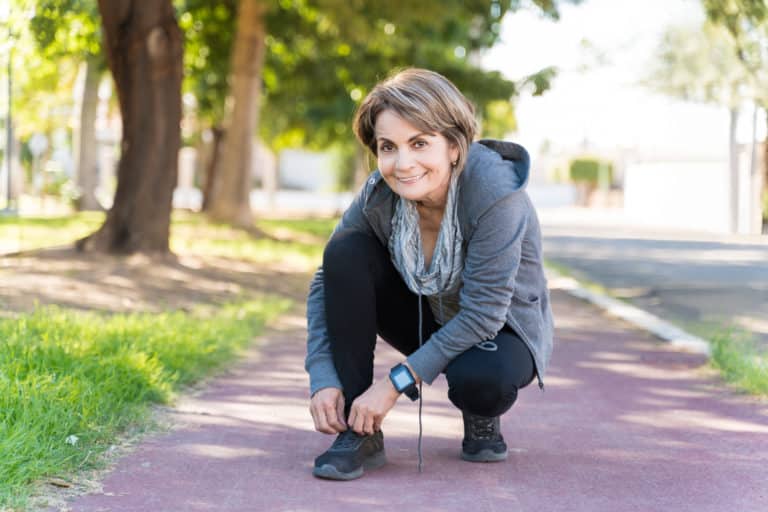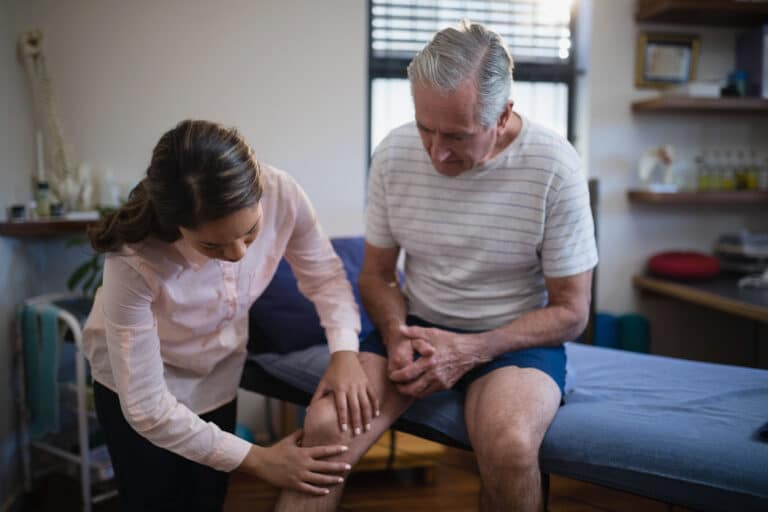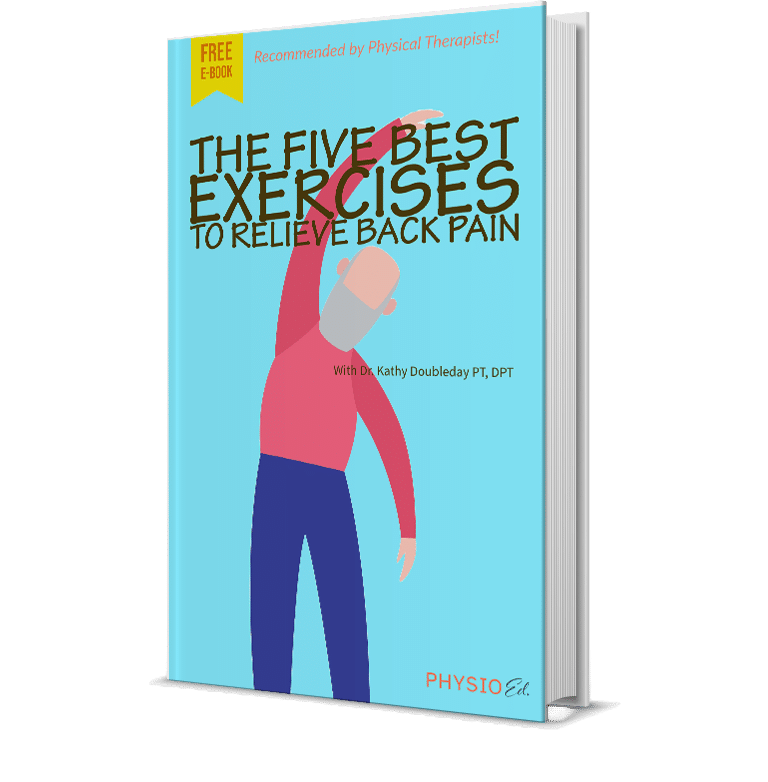Arthritis can be very challenging to live with and may affect any joint in your body. One common joint affected by arthritis is the acromioclavicular (AC) joint. But how do you know if you are experiencing AC joint arthritis?
In this article, we will dive into what AC joint arthritis is, current treatment options, and which exercises are best to improve shoulder mobility.
What is the AC Joint?
The acromioclavicular (AC) joint is a small joint located at the top of your shoulder where the tip of your shoulder blade, or scapula (the acromion process), and your collarbone (the clavicle) meet. This joint is lined with cartilage, which allows for smooth movement.
The AC joint’s role is to enable the movement of the scapula. It plays a role in shoulder flexion (raising your arm overhead, in front of your body) and shoulder abduction (raising your arm overhead, away from your body).
If the AC joint’s function becomes limited, it can affect the entire shoulder’s range of motion.
AC Joint Injuries in Active Adults
The AC joint can be susceptible to injury due to its shape and location. Repetitive shoulder use can irritate the AC joint, especially during overhead and cross-body movements.
Active adults who frequently perform these motions during work activities, exercise, or sports may have an increased risk of overuse injuries and AC joint pain. (1)
Ligament sprains are one of the most common forms of injury to the AC joint. The AC joint is held together by the acromioclavicular ligament, which provides stability and limits the separation of the two bones. When this ligament is placed under excessive load, it can overstretch and become partially torn.
The symptoms of AC joint sprains can vary. First-degree sprains typically involve shoulder joint pain, tenderness in the shoulder, and sometimes pain with reaching or carrying.
Second-degree sprains are characterized by reduced stability and strength of the AC joint, with a noticeable “bump” due to the ligament’s laxity, usually accompanied by pain during reaching and carrying.
Third-degree sprains are the most severe, involving a total ligament rupture, leading to severe instability and weakness of the shoulder joint.
However, one of the most common causes of shoulder pain in older adults is AC joint arthritis.
The Basics of AC Joint Arthritis
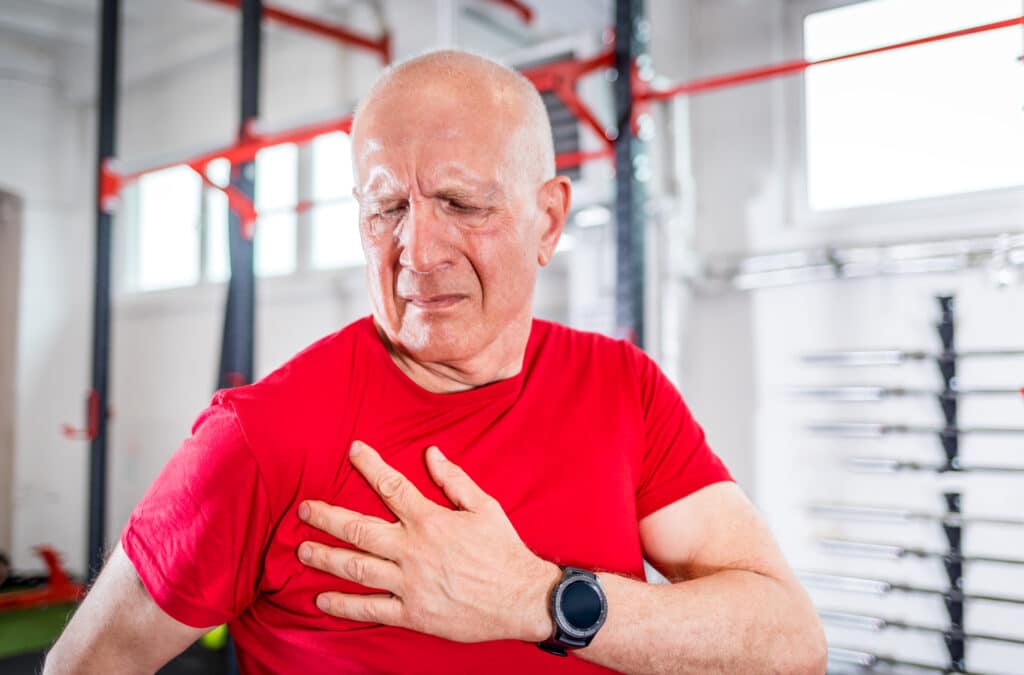
Arthritis, the term for pain and inflammation within a joint, is a common concern for older adults. The most prevalent form, osteoarthritis (OA), involves the gradual breakdown of cartilage lining the joint, leading to increased stress and friction between bones. However, arthritis can affect different parts of your body, including the AC joint.
Part of the normal wear and tear of the AC joint is due to its location and its frequent use for everyday movements. When the cartilage that lines the joint wears away, AC joint arthritis occurs. It’s important to note that AC Joint arthritis is not the same as shoulder arthritis, which doctors usually call ‘glenohumeral joint arthritis.’
OA is a part of life, and most people will develop small amounts throughout their lifetime due to repetitive stress and wear on the body’s joints. However, a significant accumulation of OA in a single joint can lead to dysfunction. This is especially true for older adults, who are more prone to experiencing OA.
The Impact of AC Joint Arthritis
In the case of AC joint arthritis, the cartilage lining the joint becomes progressively thinner, and the ends of the joint roughen. As a result, motion at the joint becomes stiffer and more limited. Additionally, motions that compress the AC joint, such as crossing the arm to the opposite side of the body, may be painful due to compression of the sensitive joint.
The specific shape of your acromioclavicular joint, determined by your genetics, may increase the likelihood of developing arthritis. However, AC joint shape only accounts for a fraction of OA incidence, with most OA occurring due to specific activities and stressors on the AC joint.
Because the AC joint is involved in achieving the end ranges of overhead shoulder motion, these motions may become limited and painful as the severity of arthritis progresses. This might affect your ability to reach a high shelf, throw a ball, or swing a racquet.
AC Joint Arthritis Treatment Options
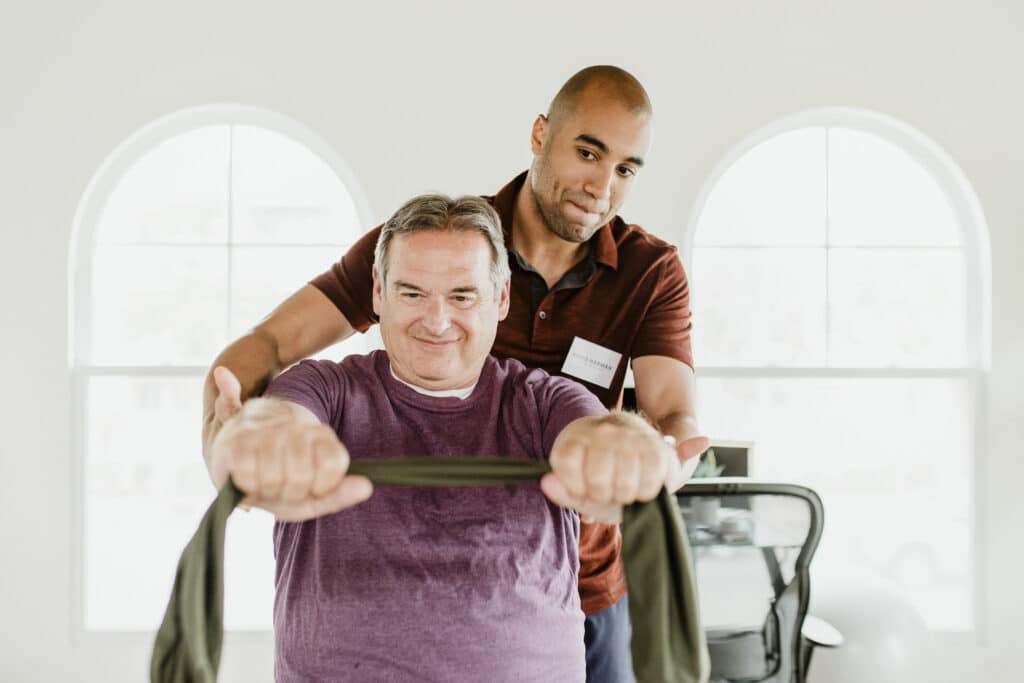
There are many treatments available for AC joint arthritis. While OA involves permanent changes to bone, most treatments focus on slowing the progression of arthritis, minimizing pain, and maximizing function.
Physical Therapy: Your First Line of Defense
In many cases, physical therapy will be the first choice for treatment. Your physical therapist will likely help you find exercises that improve your strength and range of motion while limiting stress on your AC joint during daily activities or sports.
Additionally, manual therapy may be performed to reduce pain and improve exercise tolerance.
Medication
Your doctor may also prescribe medications to manage your arthritis symptoms. In many cases, oral analgesics (painkillers) are prescribed to help manage persistent aches and pains due to arthritis.
Non-steroidal anti-inflammatories (NSAIDs) may also be prescribed to help limit inflammation and swelling around the joint.
Your doctor may also recommend a variety of topical creams or patches to help manage symptoms of arthritis, which may be the best option for those with poor tolerance for oral medications.
Injection Therapy
While mild cases of AC joint arthritis respond well to physical therapy, more severe cases may require injection therapy to improve symptoms.
One of the most common types of injection therapy is a steroid injection, which aims to reduce joint inflammation temporarily. A steroid injection typically improves tolerance for joint movement, which can improve the response to other AC joint arthritis treatments.
Surgery: The Last Resort
Very severe cases of AC joint arthritis may require surgical treatment. A commonly performed surgery is a distal clavicle resection, where the tip of the clavicle is removed to eliminate contact between the rough edges of bone within the AC joint.
In many cases, AC joint surgery will be followed with physical therapy to restore the motion and strength of the shoulder.
AC Joint Exercises for Shoulder Mobility
As the severity of AC joint arthritis progresses, shoulder mobility (the ability to move into and control certain positions) will generally decrease. It’s essential to have a selection of safe physical therapy exercises that help improve shoulder mobility to minimize pain and maximize your function.
Although there are many potential AC joint exercises for improving shoulder motion, these examples are commonly used and are effective for many active seniors..
Overhead Shoulder Flexion with Dowel
- Start lying on your back with your knees bent while holding a dowel in both hands.
- Slowly raise both arms overhead, using your mobile shoulder to assist your stiff shoulder.
- Pause at the end of the comfortable range of motion and return to the starting position.
Wall Slide
- Start by standing in a doorway or at a wall while holding a towel in one hand.
- Place the towel against the wall in front of you at shoulder level.
- Slowly slide the towel up the wall within a comfortable range of motion, then return to the starting position.
Shoulder Pendulum
- Start by leaning with one arm on the edge of a counter or table with knees slightly bent.
- Gently relax your opposite arm and allow it to hang towards the floor.
- Slowly rock your hips back and forth while keeping your arm relaxed to create a pendulum motion and repeat, attempting to maintain smooth and comfortable motion.
Doorway/Corner Posture Stretch
- Stand in an open doorway. Raise each arm to the side, bent at 90-degree angles with palms forward.
- Rest your palms on the door frame or wall corner.
- Slowly step forward with one foot. Feel the stretch in your shoulders and chest. Stand upright and don’t lean forward.
- Hold for 30 seconds. Step back and relax.
Although these AC joint exercises are generally safe, you should consult your doctor before participating in a new exercise program.
Key Takeaways
- The acromioclavicular (AC) joint is at the top of the shoulder, where the shoulder blade and collarbone meet. It plays a crucial role in shoulder flexion and abduction.
- This joint can be susceptible to injury due to its shape and location. Repetitive shoulder use, especially during overhead and cross-body movements, can cause irritation in the AC joint.
- AC joint arthritis is a common cause of shoulder pain in older adults. It occurs when the cartilage lining the AC joint wears away due to normal wear and tear.
- The impact of AC joint arthritis includes stiffer and more limited motion at the joint, and certain movements may become painful.
- Treatment options for AC joint arthritis include physical therapy, medication, injection therapy, and in severe cases, surgery.
- Physical therapy exercises that can help improve shoulder mobility in people with AC joint arthritis include overhead shoulder flexion with a dowel, wall slide, shoulder pendulum, and doorway/corner posture stretch.
References
- Menge, T. J., Boykin, R. E., Bushnell, B. D., & Byram, I. R. (2014). Acromioclavicular osteoarthritis: a common cause of shoulder pain. Southern Medical Journal, 107(5), 324–329.
- UC Davis Health Department of Orthopaedic Surgery: AC joint rehabilitation protocol.
- Candela, V., Villani, C., Preziosi Standoli, J., Scacchi, M., & Gumina, S. (2021). AC joint osteoarthritis: The role of genetics. An MRI evaluation of asymptomatic elderly twins. Journal of anatomy, 238(4), 1023–1027.
- Choose PT: Physical Therapy Guide to Osteoarthritis of The Shoulder
- Bigliani, L. U., Nicholson, G. P., & Flatow, E. L. (1993). Arthroscopic resection of the distal clavicle. The Orthopedic clinics of North America, 24(1), 133–141




